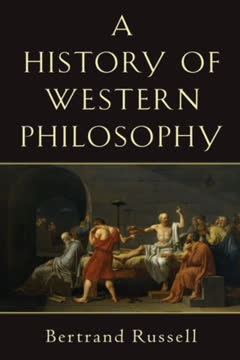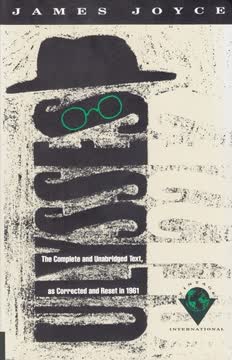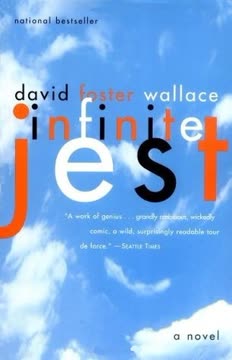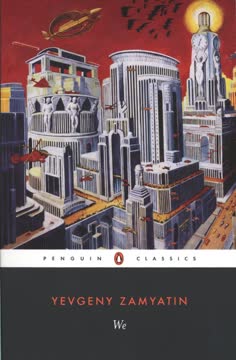Key Takeaways
1. Interpretation is a Dance Between Text and Reader
The limits of interpretation coincide with the rights of the text (which does not mean with the rights of its author).
Dialectic of Rights. Interpretation isn't a free-for-all; it's a negotiation between the text's inherent structure and the reader's active engagement. The text has its own "rights," setting boundaries on what can be reasonably inferred, while the reader has the right to explore its potential meanings. This balance prevents both rigid, author-centric readings and chaotic, reader-centric misinterpretations.
Active Engagement. Readers aren't passive recipients of meaning; they actively construct it through their own experiences, knowledge, and perspectives. This active role is crucial for understanding the text's potential, but it must be guided by the text's own constraints. The reader's freedom is not absolute, but a freedom within the framework of the text.
Beyond Authorial Intent. While the author's intention is a factor, it's not the sole determinant of a text's meaning. The text, once created, takes on a life of its own, capable of generating interpretations that the author may not have foreseen. The text's "rights" are not the author's rights, but the rights of the text as a semiotic object.
2. Symbols are Contextually Constrained, Not Infinitely Open
Texts are the human way to reduce the world to a manageable format, open to an intersubjective interpretive discourse.
Symbol vs. Allegory. Symbols, unlike allegories, don't have fixed, one-to-one meanings. They evoke a range of associations and interpretations, but this range is not infinite. The context in which a symbol appears limits its potential meanings, preventing it from becoming a free-floating signifier.
Textual Anchors. Symbols, when placed within a text, are anchored by their context. This context provides a framework for interpretation, guiding the reader toward certain meanings and away from others. The text acts as a filter, reducing the infinite possibilities of a symbol to a manageable set of interpretations.
Paradigm vs. Syntagm. Symbols are paradigmatically open to infinite meanings, but syntagmatically, or textually, open only to the indefinite interpretations allowed by the context. This means that while a symbol might have many potential meanings, its actual meaning in a text is limited by its relationship to other elements in that text.
3. Unlimited Semiosis Doesn't Mean Uncontrolled Interpretation
To say that interpretation (as the basic feature of semiosis) is potentially unlimited does not mean that interpretation has no object and that it "riverruns" for the mere sake of itself.
Peircean Semiosis. The idea of unlimited semiosis, where one sign leads to another in an endless chain of interpretation, doesn't imply that interpretation is arbitrary or without criteria. It means that the process of interpretation is ongoing and potentially infinite, but it is still guided by the object of interpretation.
Knowing More. In Peircean semiosis, each interpretant adds to our understanding of the original sign. The process is not a random drift but a progressive approximation of the final logical interpretant. The goal is to know more about the sign, not just to know something else.
Contextual Relevance. Semiosis is potentially unlimited from the point of view of the system, but not from the point of view of the process. In the course of a semiosic process, we want to know only what is relevant according to a given universe of discourse. This means that interpretation is always guided by a specific purpose and context.
4. Literal Meaning is the Necessary Starting Point
Any act of freedom on the part of the reader can come after, not before, the acceptance of that constraint.
Dictionary Definitions. Before any act of interpretation, there must be an acceptance of the literal meaning of words, as defined by dictionaries and common usage. This literal meaning serves as a foundation upon which further interpretations can be built.
Zero-Degree Meaning. The literal meaning is the "zero-degree" meaning, the one that every member of a linguistic community would first define. It is the baseline from which all other interpretations deviate. Without this baseline, there would be no way to recognize figurative or metaphorical meanings.
Reader's Freedom. The reader's freedom to interpret a text comes after, not before, the acceptance of the literal meaning. This means that any act of creative reading must be grounded in a shared understanding of the text's basic semantic content. The reader's freedom is not a license to ignore the text's inherent structure.
5. Texts Guide Readers, Not Dictate Them
The limits of interpretation coincide with the rights of the text (which does not mean with the rights of its author).
Model Reader. Texts are designed to elicit a specific kind of reader, a "Model Reader," who is capable of understanding the text's intended meanings and engaging with its complexities. This reader is not a real person but a textual construct, a set of competencies and expectations that the text itself defines.
Interpretive Cooperation. The relationship between text and reader is one of cooperation, not dictation. The text provides instructions and cues, but the reader must actively participate in the process of making meaning. This cooperation is a dynamic process, where the reader's choices are guided by the text's structure.
Textual Constraints. While texts invite multiple interpretations, they also impose constraints on what can be reasonably inferred. These constraints are not meant to limit the reader's freedom but to ensure that the interpretation remains grounded in the text's inherent structure. The text is not a blank slate, but a structured system that guides the reader's journey.
6. Hermetic Drift is Not Unlimited Semiosis
A sign is something by knowing which we know something more.
Hermetic Drift. Hermetic drift is an interpretive habit based on universal analogy and sympathy, where everything is connected to everything else through resemblances. This approach leads to an uncontrolled shifting from meaning to meaning, where the final content of every expression is an empty secret.
Peircean Semiosis. In contrast, Peircean semiosis is a process of progressive determination, where each interpretant adds to our understanding of the original sign. It is a process of knowing more, not just knowing something else. The goal is to approximate the final logical interpretant, not to endlessly defer meaning.
Connotative Neoplasm. Hermetic drift can be seen as a form of connotative neoplasm, where associations proliferate without any contextual constraints. This leads to a drift phenomenon where the content of the new sign no longer depends on the content of the first one. Peircean semiosis, on the other hand, is a process of growth, where each new interpretant builds upon the previous one.
7. Fictional Worlds are Small, Not Infinite
Fictional possible world is a series of linguistic descriptions that readers are supposed to interpret as referring to a possible state of affairs where if p is true then non-p is false.
Furnished Worlds. Fictional worlds are not empty sets but rather furnished and nonempty states of affairs, populated by individuals with specific properties and governed by certain laws. These worlds are cultural constructs, created through linguistic descriptions and interpreted by readers.
Small Worlds. Fictional worlds are always "small worlds," representing a limited set of events and characters within a specific context. They are not meant to be complete or exhaustive representations of reality but rather focused explorations of particular themes and ideas.
Incomplete and Unhomogeneous. Fictional worlds are often incomplete and semantically unhomogeneous, leaving many details unspecified. Readers are expected to fill in the gaps using their own knowledge and imagination, but this process is always guided by the text's inherent structure. The text provides a framework, but the reader must actively participate in the construction of the world.
Last updated:
FAQ
What's The Limits of Interpretation about?
- Exploration of Interpretation: Umberto Eco's The Limits of Interpretation examines the complexities of interpreting texts, particularly in literature and semiotics. It highlights the multiplicity of meanings that can be derived from a single text.
- Reader-Response Criticism: The book discusses how the meaning of a text is shaped not only by the author but also by the reader's interpretation, emphasizing the active role of the reader in meaning-making.
- Semiotic Framework: Eco uses a semiotic framework to analyze how signs and symbols function within texts, arguing that understanding these relationships is crucial for interpretation.
Why should I read The Limits of Interpretation?
- Insightful Analysis: The book offers a profound analysis of interpretation, challenging conventional views on meaning and authorship, making it essential for literature and philosophy enthusiasts.
- Interdisciplinary Approach: Eco bridges various fields, including linguistics and literary theory, providing a comprehensive understanding of how texts operate.
- Critical Thinking: It encourages readers to think critically about how they engage with texts and the implications of their interpretations.
What are the key takeaways of The Limits of Interpretation?
- Unlimited Semiosis: Eco introduces the concept of unlimited semiosis, suggesting that interpretation can continue indefinitely without reaching a final meaning.
- Constraints of Interpretation: Despite potential for unlimited interpretations, texts impose constraints based on structure, context, and authorial intent.
- Role of the Reader: The reader plays an active role in constructing meaning, but interpretations must remain grounded in the text.
What are the best quotes from The Limits of Interpretation and what do they mean?
- "Language always says more...": This quote highlights that texts carry layers of meaning beyond their surface interpretation, urging readers to engage deeply.
- "The limits of interpretation...": Eco emphasizes the balance between reader freedom and respecting the text's inherent constraints.
- "Even the most radical deconstructionists...": This quote underscores the necessity of grounding interpretations in the text itself, reminding that not all readings are valid.
How does Eco define "unlimited semiosis" in The Limits of Interpretation?
- Concept of Unlimited Semiosis: Eco defines it as the idea that interpretation can continue indefinitely, challenging traditional notions of fixed meanings.
- Implications for Interpretation: Every interpretation can lead to further interpretations, creating a chain of meanings that evolve over time.
- Textual Constraints: Despite potential for unlimited interpretations, texts impose constraints that guide understanding, maintaining connection to original intent.
What is Eco's view on reader-response criticism in The Limits of Interpretation?
- Active Reader Engagement: Eco acknowledges the reader's role in interpreting texts, arguing that readers actively construct meaning based on their experiences.
- Limits to Interpretation: While supporting reader involvement, Eco stresses that texts impose limits on interpretation through structure and context.
- Dialectical Relationship: He presents a dynamic relationship between text and reader, allowing for multiple readings while maintaining a connection to the text.
How does Eco address the relationship between authorial intent and interpretation?
- Authorial Intent: Eco acknowledges its significance in shaping a text's meaning but argues that once published, meaning is not solely determined by the author.
- Reader's Interpretation: Readers bring their interpretations, which can diverge from the author's original intent, highlighting the collaborative nature of meaning-making.
- Balancing Act: Eco advocates for balancing respect for authorial intent with allowing reader interpretations for a comprehensive understanding.
What is the significance of the "limits of interpretation" in Eco's work?
- Defining Boundaries: The "limits of interpretation" refer to boundaries that texts impose on understanding, ensuring interpretations remain grounded in the text.
- Respecting Textual Integrity: This concept emphasizes respecting the text's integrity while engaging in interpretation, reminding that not all readings are valid.
- Framework for Analysis: It provides a framework for analyzing texts, guiding readers to consider both the text's structure and their interpretive choices.
How does Eco's The Limits of Interpretation contribute to semiotics?
- Foundation for Semiotic Theory: Eco's work lays a foundation for understanding the relationship between signs and meanings within texts.
- Interdisciplinary Connections: The book connects semiotics with literary theory, linguistics, and philosophy, broadening the scope of semiotic studies.
- Influence on Future Research: Eco's insights have influenced subsequent research, prompting scholars to explore complexities of meaning-making in various contexts.
What is Eco's definition of a "Model Reader" in The Limits of Interpretation?
- Reader's Role: The Model Reader is an idealized reader who aligns with the author's intentions while bringing their own interpretations.
- Infinite Conjectures: This reader explores various interpretations within the bounds of what the text can convey, encouraging creativity while staying anchored in content.
- Cultural Context: The Model Reader's background and cultural context shape their understanding, making the reading experience unique.
How does Eco differentiate between "semantics" and "pragmatics" in The Limits of Interpretation?
- Semantics Defined: Eco describes semantics as the study of meaning within a sign system, focusing on how signs relate to what they denote.
- Pragmatics Defined: Pragmatics examines how context influences interpretation, including speaker intentions and situational factors.
- Interrelation: Eco argues that semantics and pragmatics are interdependent, requiring both for understanding a text.
What is the relationship between "text" and "context" in Eco's analysis?
- Textual Coherence: Eco argues that a text must be understood in relation to its context, which includes cultural, historical, and situational factors.
- Dynamic Interaction: The relationship is dynamic; while the text conveys meanings, context can alter or enhance them based on interpretation.
- Interpretive Strategies: Effective interpretation requires awareness of both the text's internal structure and external context, allowing meaningful engagement.
Review Summary
The Limits of Interpretation is a collection of essays exploring the boundaries of textual interpretation. Readers appreciate Eco's defense of the text's intentio operis and his rejection of unlimited interpretation. The book is praised for its intellectual depth and Eco's entertaining writing style. Some find it challenging due to its academic nature and specialized vocabulary. Reviewers note that Eco draws on various philosophical traditions and semiotics to develop his arguments. While some essays are more accessible than others, the overall work is considered significant in the field of hermeneutics and literary theory.
Similar Books
Download PDF
Download EPUB
.epub digital book format is ideal for reading ebooks on phones, tablets, and e-readers.














